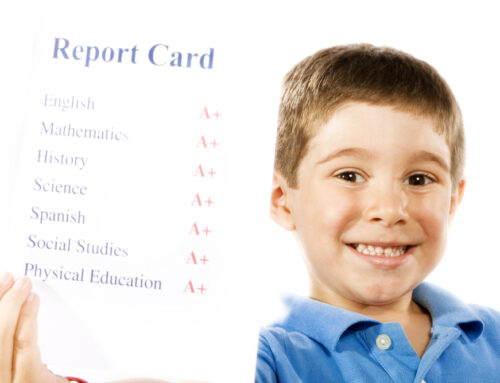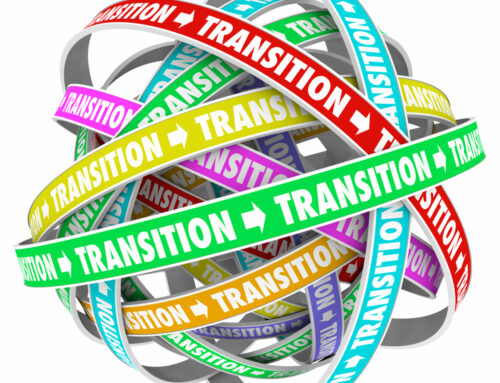When I was a kid, I remember friends whose parents would pay them for every “A” on their report card. Others got special treats, like a trip to get ice cream or see a movie. The U.S., whose national report card came out last month, sadly isn’t eligible for any of these rewards.
The National Assessment of Educational Progress (NAEP), known as the nation’s report card, was released on October 24. Unfortunately, it confirmed the learning loss I discussed in my September blog post. Students across all ethnic, racial and socio-economic groups saw scores in reading and math decline significantly.
NAEP has been administered since the early 1990s. The exam is considered more rigorous than many state assessments and was given to almost 450,000 fourth and eighth graders in more than 10,000 schools between January and March of this year.
In math, scores for both grade levels fell in nearly every state. Only 26% of eighth graders were proficient, down from 34% in 2019. Fourth graders saw declines in 41 states with just 36% proficient, down from 41% before the pandemic began.
Reading scores also decreased. In fact, no state showed sizable improvement in reading and only about one-third of students were proficient, meaning they demonstrated competency and are on track for success in the future. Educators have long known that students who aren’t reading at grade level by the third grade are more likely to drop out of high school or not graduate on time. And students who aren’t ready for high school math are at a distinct disadvantage.
It probably goes without saying that the pandemic did no favors for previously underserved students. Their test scores were even worse and their road to proficiency is going to be even more rocky.
So, it seems obvious that students are less prepared for college because of the pandemic. For many, online and asynchronous learning was not ideal. And, grade-inflation was common. Students still received “A’s” in calculus and language arts, but do those “A’s” indicate the same amount of knowledge as they did before Covid? Many experts think not.
Some college professors have seen a marked change in the educational preparedness of students entering in 2021 and beyond. According to Jed Applerouth, a well known test prep and tutoring expert, “A veteran math professor at UT Austin noted that 25% of his students in the fall of 2021 failed intro Calculus compared to 5% in an ordinary year.” And, according to the Director of Delaware’s Higher Education Office, the “lack of college readiness caused an increase in failing grades or withdrawals from entry-level courses, particularly math and English.”
As I mentioned in my previous post, academic learning loss wasn’t the only negative impact of the pandemic. Social and emotional losses and psychological issues have also been prevalent. For many students, the pandemic’s forced isolation was life-changing. The CDC reported that in 2021, 37% of high school students experienced “poor mental health during the COVID-19 pandemic, and 44% reported they persistently felt sad or hopeless during the past year.”
If cold statistics don’t illustrate the psychological impacts of the pandemic, perhaps a first person account will. According to one high school senior I’m currently working with, “I struggled along with many students to be present and engaged. I began to dread anything that had to do with school. My grades dropped and my attitude turned negative. I was unhappy and the anxiety that now surrounded my schoolwork made everything worse. Anxiety attacks were a new thing that I had to face. Crippling pressure on my chest, intense panic, not knowing when it would end, or when I’d be able to take another breath. Three to four attacks a week caused me to dissociate from life.”
Thankfully, my student’s parents got her the help she needed. She went on to say, “As my therapist and I talked, I learned more about myself. I gained the coping skills I needed to deal with my feelings. As an added benefit, I was able to help my friends who were also similarly struggling.”
So where do we go from here? As a nation, more than $200 billion has been allocated through various plans, acts and appropriations. Additional resources will be needed to hire new teachers and fund remedial education and tutoring programs for struggling K-12 students. Colleges and universities will need to meet the increased demand for introductory math, reading and writing courses, as well as provide more tutoring and counseling services.
Individual students may need academic support, especially in math, where a lack of foundation can mean failure later on. More mentorship, counseling and social support may also be needed as students make the transition to college.
As students research colleges, asking questions about academic as well as social-emotional and psychological support services on campus will be essential to finding a good fit.







[…] of the “soft skills” necessary for academic and personal success. In another post, we addressed the implications of these issues for colleges, which are now educating students whose […]